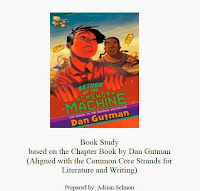A brief summary of the game: You have three dice and you can choose the level of difficulty to challenge your students. There are 3 different levels:
Snowball 100 requires students to roll 2 dice and add the totals until they reach 100. The “twist”? If they roll doubles, they need to SUBTRACT that amount.
Snowball 200 requires students to roll 3 dice and add the totals until they reach 200. The “twist”? If they roll “3 in a row”, they have to dthe total
(ex. 3,4,5 or 1,2,3)
Snowball 300 requires students to roll 3 dice, add two, and multiply by the third until they reach 300. The “twist”? If they roll “3 in a row”, they have to subtract the total
(ex. 3,4,5 or 1,2,3)
I chose to do the Snowball 300 and the students had a blast! Throughout the game, I got a chance to test their multiply skills, their addition and subtraction skills and their understanding of positive and negative integers. I will definitely be playing this game again!












